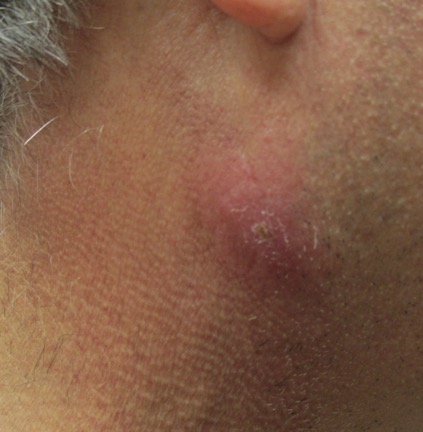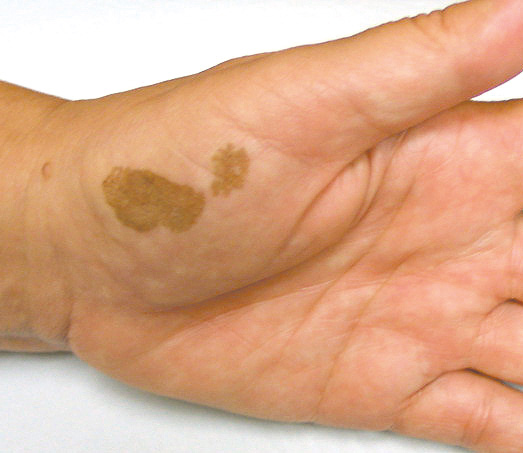CORRECT DIAGNOSIS:
Cutaneous Leishmaniasis
DISCUSSION:
Cutaneous leishmaniasis is a widespread parasitic disease that can affect individuals of any age, caused by over 20 different species of the Leishmania parasite. This condition can manifest as either cutaneous or visceral forms, with transmission occurring through the bites of infected female sandflies. The World Health Organization (WHO) estimates approximately 1.2 million cases of cutaneous leishmaniasis occur annually, and the disease is endemic in regions worldwide, excluding Australia and Antarctica. The visceral form of leishmaniasis carries a mortality rate of about 10%, particularly in areas such as India, Bangladesh, Sudan, Brazil, and Ethiopia.
Geographically, the cutaneous form is evenly distributed across Western Asia, the Mediterranean, and Latin America, with a notable increase in cases in the United States attributed to rising international travel. Leishmaniasis is categorized into two main types: Old World and New World.
Old World leishmaniasis refers to infections found in the Eastern Hemisphere, including species like Leishmania tropica, L. major, L. aethiopica, and L. donovani. These infections are primarily transmitted by sandflies of the genus Phlebotomus and are typically self-healing.
In contrast, New World leishmaniasis encompasses infections in the Americas, involving species such as L. mexicana, L. braziliensis, L. guyanensis, and L. panamensis. L. mexicana is known to cause ear ulcerations (chiclero’s ulcer), while L. panamensis tends to spread through lymphatics. New World leishmaniasis is transmitted by sandflies of the genus Lutzomyia. The visceral form is generally associated with L. donovani, L. infantum, or L. chagasi. In the developed world, liposomal amphotericin B has emerged as the treatment of choice due to its effectiveness in reducing hospital stay durations.
Diagnosis of cutaneous leishmaniasis can be challenging, as even skilled practitioners can only detect the parasite in about 70% of cases using histological methods. Additionally, these methods do not allow for species determination. The CDC provides free evaluation of biopsy specimens, smears, dermal scrapings, and PCR analyses globally. PCR is particularly crucial for identifying specific species, which is essential for determining appropriate treatment and understanding prognosis, as different species can have varying clinical outcomes.
TREATMENT:
The patient currently on fluconazole 400mg BID daily x6 weeks after he was referred to UF Shands department of infectious disease. Dosing is 8mg/kg/day (pt is 97 kg).
REFERENCES:
Handler, M. Z., Patel, P. A., Kapila, R., Al-Qubati, Y., & Schwartz, R. A. (2015). Cutaneous and mucocutaneous leishmaniasis: Differential diagnosis, diagnosis, histopathology, and management. Journal of the American Academy of Dermatology, 73(6), 911-926. https://doi.org/10.1016/j.jaad.2015.08.007
Handler, M. Z., Patel, P. A., Kapila, R., Al-Qubati, Y., & Schwartz, R. A. (2015). Cutaneous and mucocutaneous leishmaniasis: Clinical perspectives. Journal of the American Academy of Dermatology, 73(6), 897-908. https://doi.org/10.1016/j.jaad.2015.08.006
Centers for Disease Control and Prevention. (n.d.). Leishmaniasis. Retrieved from http://www.cdc.gov/parasites/leishmaniasis/
Alrajhi, A. A., Ibrahim, E. A., De Vol, E. B., Khairat, M., Faris, R. M., & Maguire, J. H. (2002). Fluconazole for the treatment of cutaneous leishmaniasis caused by Leishmania major. New England Journal of Medicine, 346(12), 891-895. https://doi.org/10.1056/NEJMoa012176
Zvulunov, A., Klaus, S., & Vardy, D. (2002). Fluconazole for the treatment of cutaneous leishmaniasis. New England Journal of Medicine, 347(5), 370-371. https://doi.org/10.1056/NEJMoa012176
Ben Salah, A., Ben Messaoud, N., Guedri, E., et al. (2013). Topical paromomycin with or without gentamicin for cutaneous leishmaniasis. New England Journal of Medicine, 368(6), 524-532. https://doi.org/10.1056/NEJMoa1205800
Additional Comments: Consider cutaneous leishmaniasis in a non-healing sore with a patient with recent international travel. The CDC offers free evaluation of biopsy specimens including PCR study analysis. Treatment depends on species type and may best be performed under direction of infectious disease.




